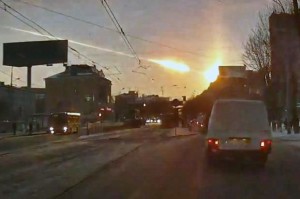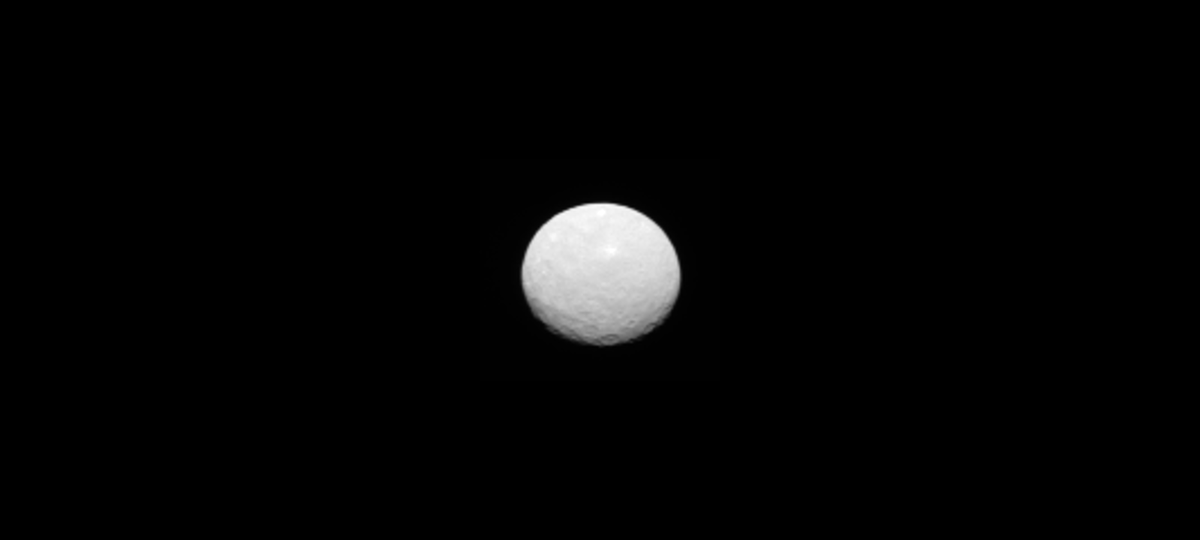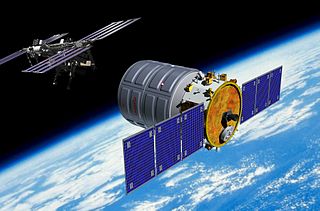To Scale: The Solar System
To Scale: The Solar System from Wylie Overstreet on Vimeo.
Well done, Sir. Well done.
LightSail: A Revolutionary Solar Sailing Spacecraft
Bill Nye and The Planetary Society have launched a Kickstarter campaign to fund a solar sail spacecraft. And if that’s not enough to get you over there to back this amazing project he’s got Neil deGrasse Tyson on board as well AND it’s going to be launched by SpaceX! Bill Nye, Neil deGrasse Tyson and SpaceX. Need I say more?
A Water Planet in Our Solar System?
Okay, Ceres isn’t actually a planet, but a dwarf planet. Still, that’s nothing to sneeze at. Pluto is a dwarf planet, and we still know about it. So why did we not learn about Ceres? Oh, sure, you may argue that Pluto is 14 times more massive than Ceres (and you’d be right), but there is one reason to believe the solar system’s smallest dwarf planet might be the most exciting one:
It’s a water planet.
Last year, the Herschel Space Observatory announced that it had detected water vapor on Ceres. In case that isn’t impressive enough, I should add that it’s a whole LOT of water:
Scientists believe Ceres contains rock in its interior with a thick mantle of ice that, if melted, would amount to more fresh water than is present on all of Earth. The materials making up Ceres likely date from the first few million years of our solar system’s existence and accumulated before the planets formed.
More fresh water than is present on all of Earth? No wonder Ceres becomes the “Seat of the Empire” in Frank Herbert‘s Dune series. Take that, Arrakis.
Not only that, but geysers on Ceres appear to be erupting water into space, where the liquid sublimates into ice, possibly resulting in snow (which explains the white spots in the above image). Yes, that’s right, we may have our own mini-Hoth in the sol system. All we need now is to genetically engineer some tauntauns, and we’re ready for colonization.
Rosetta Wakes Up (Livestream)
Rosetta is the first spacecraft designed to orbit and land a probe on a comet <gulp>. It is waking up right now, after over two years of sleep. Because Rosetta is so far away, ESA and NASA are using the 70-meter Goldstone Antenna to listen for her faint signal. They expect to hear something around noonish CT, give or take a half hour. Above is the live feed, embedded.
MAVEN to launch any minute now!
Live streaming video by Ustream
The MAVEN launch is happening now (as of this posting, of course). Above is the live feed. MAVEN is the Mars orbiter that is going to find out why Mars lost all that water. It’s rather important that it launches relatively soon, as that rather big storm that caused trouble in Illinois is pushing winds toward Florida. If NASA misses its window, MAVEN will have to wait two more years before Mars gets close enough to try again.
Good luck, MAVEN!
Guest Post by Ann Leckie: Personhood and Song
Ann Leckie has worked as a waitress, a receptionist, a rodman on a land-surveying crew, a lunch lady, and a recording engineer. The author of many published short stories, and secretary of the Science Fiction Writers of America, she lives in St. Louis, Missouri, with her husband, children, and cats.
 What does it mean to be human? It’s a really difficult question to answer, and one that science fiction and fantasy are particularly well-suited to tackling. Not that there’s ever been any sort of simple answer even (especially?) through fiction, but SF&F can present us with a range of characters that test the boundaries of what it means to be a person, and what that might imply about what it means to be human.
What does it mean to be human? It’s a really difficult question to answer, and one that science fiction and fantasy are particularly well-suited to tackling. Not that there’s ever been any sort of simple answer even (especially?) through fiction, but SF&F can present us with a range of characters that test the boundaries of what it means to be a person, and what that might imply about what it means to be human.
Androids and artificial intelligences are a favorite vehicle for this sort of exploration. If you build a machine that looks or acts just like a person, what’s the difference? Is there one? Is that difference important? Why? It was a question I was going to have to consider, a question that was, in some ways, going to be crucial to my novel, Ancillary Justice.
The narrator of Ancillary Justice is the troop carrier Justice of Toren. And also a unit of twenty bodies slaved to Justice of Toren, the ancillary unit Justice of Toren One Esk. My narrator is an artificial intelligence that’s also made up of human bodies. What sort of being is this?
Voyager 1 Spacecraft has Officially Left the Solar System
Finally, after 36 years and 12 billion miles Voyager I has left the solar system! Here’s a roundup of the coverage:
NASA and Commercial Spaceflight: September 2013 Update
Moon enthusiasts should have an occasion to celebrate in September. As of this writing, NASA has scheduled the Lunar Atmosphere and Dust Environment Explorer (LADEE) scheduled to launch on Friday, Sept. 6 at 10:27 p.m. CDT. LADEE is a robotic mission that will orbit the moon to gather detailed information about the lunar atmosphere, conditions near the Moon’s surface, and environmental influences on lunar dust. This will be first rocket launch of a NASA science mission from the NASA-Wallops Island Flight Facility in Virginia. Also, LADEE (pronounced “laddie”) will be the first payload launched aboard the five-stage Minotaur V rocket, developed by Orbital Sciences.
Commercial Spaceflight enthusiasts should also have an occasion to celebrate this month. As of this writing, Orbital Sciences has also scheduled the test launch of its Antares rocket and the new Cygnus capsule, also from NASA-Wallops, but this time to the International Space Station (ISS) on Tuesday, Sept. 17 at 10:16 a.m. CDT. This will be Orbital’s second test launch of Antares, the first launch of Cygnus, and the first time that Cygnus will berth with (be attached to) ISS. For this test launch, Cygnus will deliver up to 4,400 lbs. of payload (food, clothing, experiments, and equipment) to ISS. Upon the successful completion of this test launch, Orbital will be the second Commercial Spaceflight company to have launched to ISS. Then in 2014, Orbital will begin its NASA Commercial Resupply Services (CRS) contract for eight launches, scheduled to deliver a total of 44,000 lbs. of payload to ISS. The first successful Commercial Spaceflight company, SpaceX, has already begun launches under its NASA CRS contract, and SpaceX has its third (SpX-3) of twelve contracted launches scheduled for Dec. 9.
Additionally, advancements continue with the development of the NASA Space Launch System (SLS), the rockets that will take astronauts beyond the Moon, to Near Earth Asteroids (NEAs), and to Mars. In August, NASA created a rocket engine injector using “selective laser melting” (a type of 3-D printing). That rocket engine injector will channel and mix propellants during a rocket launch. This 3-D printed injector has only two parts, whereas 115 parts have been required to create such an injector by traditional means. After fabrication, the injector was installed in a rocket engine, then test fired at 6,000 degrees F at 1,400 psia pressure, and it performed flawlessly. This 3-D printing technology has the potential for significant time and cost savings required for the development of the complex rocket engine parts designed for the heavy-lift NASA SLS rockets.
Wishing much continued success to NASA and Commercial Spaceflight companies – especially Orbital Sciences – in September 2013 and beyond. If these or any other rocket launches are not being covered by the cable news stations, try NASA-TV and/or http://www.nasa.gov/.
Who says that NASA hasn’t done anything since they retired the Space Shuttles?
Ken Ruffin is the chapter president of the National Space Society (NSS) of North Texas, which supports Science, Technology, Engineering, and Math (STEM) education, and space science and space development, throughout the Dallas-Ft. Worth (DFW) metro area and beyond. Additionally, Ken has been a Trekkie since 1974.
For more information in the Dallas-Ft. Worth metro area, go to http://www.nssofnt.org/, and consider attending a NSSNT chapter meeting!
Making Coffee the Steampunk Way
Finally, the steampunk revolution produces something useful!
10,000 Near Earth Objects, and a Pleasantly More Assertive NASA
On June 18, 2013, Asteroid 2013 MZ5 was originally detected, and by June 24, it was officially identified as the 10,000th Near Earth Object (NEO – asteroids and comets whose orbits approach or cross Earth’s orbit) to be discovered. Asteroid 2013 MZ5 is approximately 1,000 feet (300 meters) across. Its orbit is well understood, and it will not approach close enough to Earth to be considered potentially hazardous. Although 10,000 NEOs may seem to be a huge number, less than 1% of NEOs believed to be 100 feet or larger (large enough to “cause significant devastation” according to NASA) have been detected. How significant would the devastation be from a 100 foot Near Earth Asteroid (NEA)? Imagine a 100 foot NEA striking a city with a population of millions, and leaving a crater where that entire city used to be. That certainly qualifies as significant devastation.
 The February 15 NEA airburst over Chelyabinsk, Russia (which injured approximately 1,000 people), brought worldwide media attention to that NEA, if only for that weekend. Since then, NASA has increased its efforts to request from the U.S. Congress the additional funding needed to identify and categorize NEOs. (Since there are believed to be considerably more NEAs than near Earth comets, the term NEA tends to be more commonplace.) Time will tell if that additional funding is approved.
The February 15 NEA airburst over Chelyabinsk, Russia (which injured approximately 1,000 people), brought worldwide media attention to that NEA, if only for that weekend. Since then, NASA has increased its efforts to request from the U.S. Congress the additional funding needed to identify and categorize NEOs. (Since there are believed to be considerably more NEAs than near Earth comets, the term NEA tends to be more commonplace.) Time will tell if that additional funding is approved.



















 Full Details
Full Details






